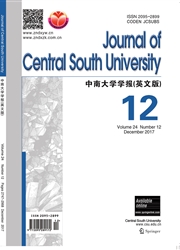

 中文摘要:
中文摘要:
A method of three-dimensional loaded slope stability for anisotropic and nonhomogeneous slopes was presented based on the upper-bound theorem of the limit analysis approach. The approach can be considered as a modification and extension of the solutions. The influences of friction angle, anisotropy factor, nonhomogeneous factor, slope angle, ratio of width to depth, and load on the slope crest were investigated. The results show that solutions are suitable to deal with the purely cohesive soils and frictional/cohesive soils, isotropic and anisotropic, homogeneous and nonhomogeneous, loaded and unloaded cases.
 英文摘要:
英文摘要:
A method of three-dimensional loaded slope stability for anisotropic and nonhomogeneous slopes was presented based on the upper-bound theorem of the limit analysis approach. The approach can be considered as a modification and extension of the solutions. The influences of friction angle, anisotropy factor, nonhomogeneous factor, slope angle, ratio of width to depth, and load on the slope crest were investigated. The results show that solutions are suitable to deal with the purely cohesive soils and frictional/cohesive soils, isotropic and anisotropic, homogeneous and nonhomogeneous, loaded and unloaded cases.
 同期刊论文项目
同期刊论文项目
 同项目期刊论文
同项目期刊论文
 Displacement Performance and Simple Prediction for Deep Excavations Supported by Contiguous Bored Pi
Displacement Performance and Simple Prediction for Deep Excavations Supported by Contiguous Bored Pi Novel Excavation and Construction Method of an Underground Highway Tunnel above Operating Metro Tunn
Novel Excavation and Construction Method of an Underground Highway Tunnel above Operating Metro Tunn 期刊信息
期刊信息
